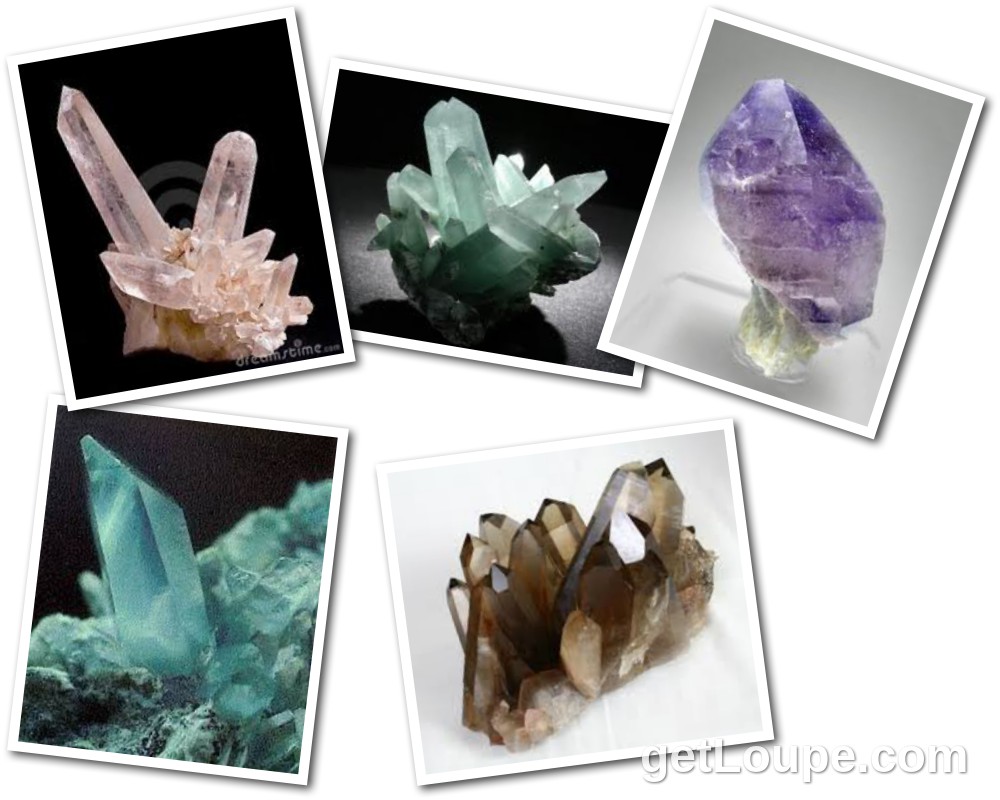
Description: Quartz
Image copyright: http://www.getloupe.com/v/25sydnqm
The Luster of quartz is glassy, and there are three different classifications; Macrocrysalline which are rock crystals like amethyst, tiger eye\'s, adventurine, eisenkiesel, and rose quartz. Microcrystalline which are jasper like flint, adventurine, heliotrope, plasma, and tiger eye\'s. Chalcedony like agate, carnelian, chrysoprase, and plasma.
Colors include colorless, purple, rose (pink), red, black, yellow, brown, green, blue, orange, etc. There are numerous names for different varieties.
Quartz hardness is numbered 7 on Moh’s scale and its final formula is SiO2. The streak of quartz is white. It has a poor/indistinct cleavage, and the rhombohedral cleavage is most common although there are at least six others reported.
Other names for quartz; a-Quartz, Alpha-Quartz, Azetulite, Azeztulite, B-Quarts (of Geophys. Lab), Brazillian Pebble, Conite (of Macculloch), Cornish Diamond, Konilite, Lemurian Seed Crystal, Lodolite, Low Quartz, Mexican Diamond, Quartz-alpha, Quartz-a, and Quertz.
Quartz can be used for; ore for silicon, glassmaking, frequency standards, optical instruments, silica source for concrete setting, filtering agents for sand, and is a major component of sand.
Video of Quartz:
http://www.youtube.com/watch?v=70M3YN-Azng
